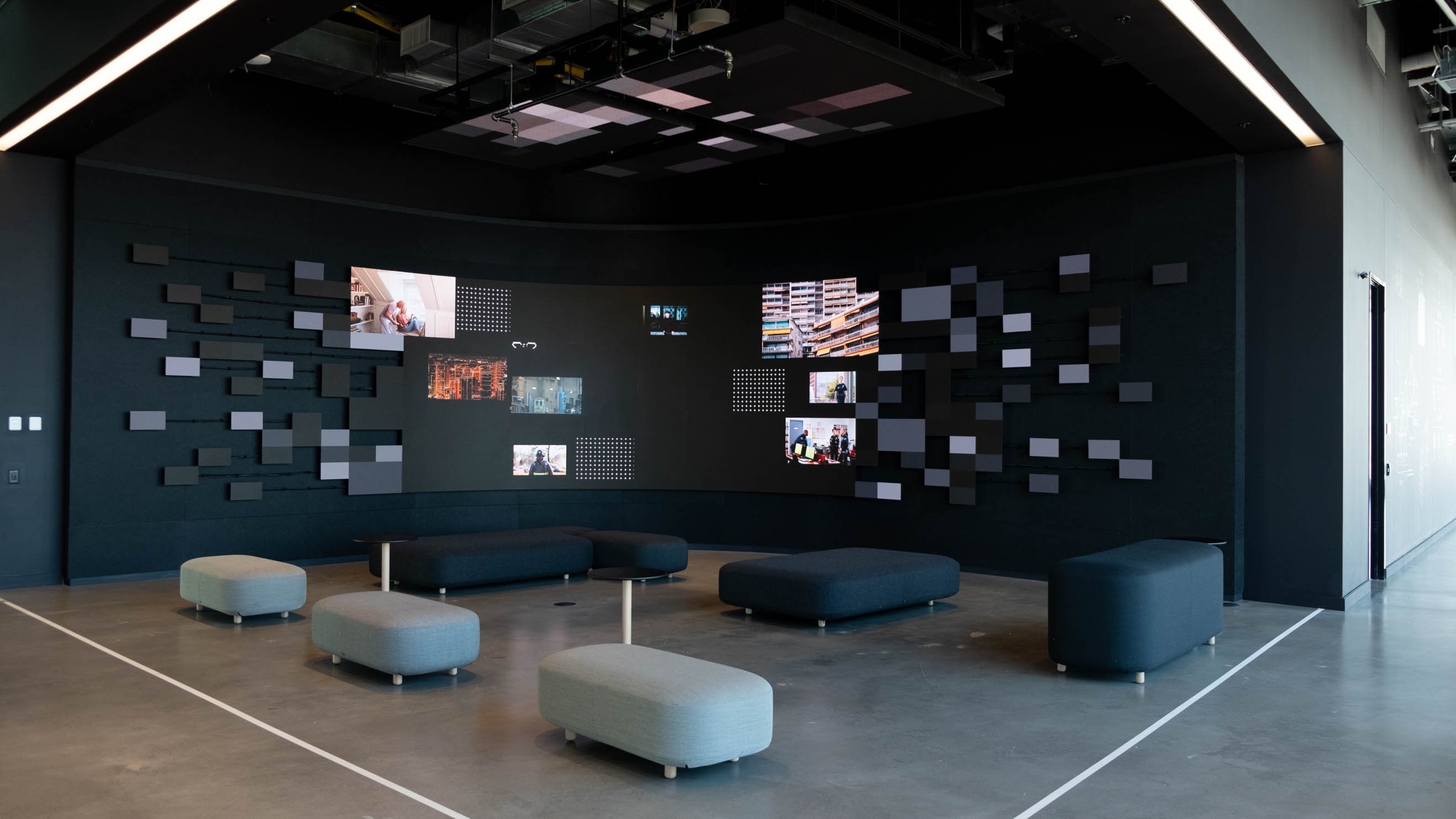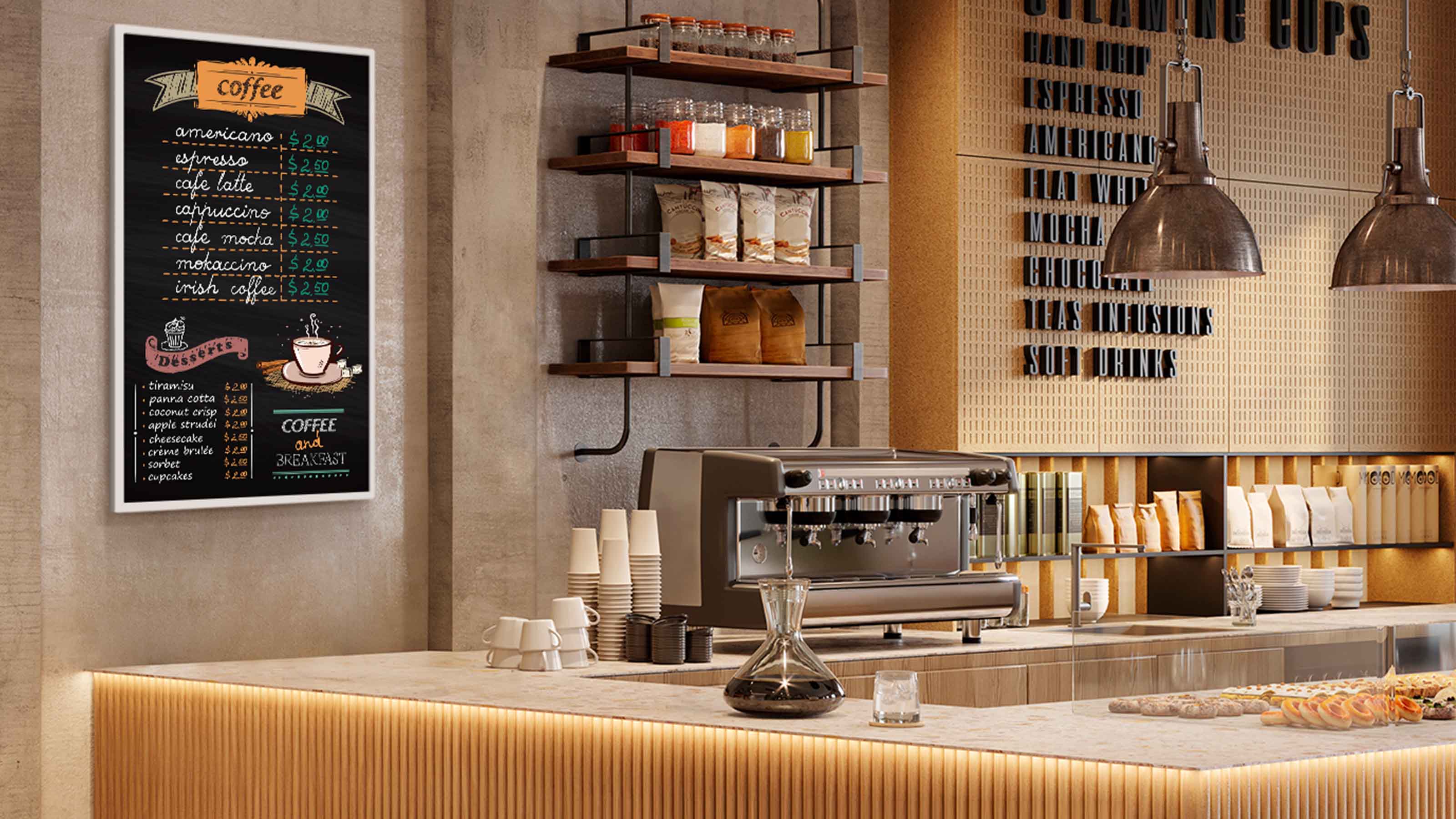Nanolumens Goes 16:9 with Concave Vide Wall on Innovation Hub Project
Main 16:9 display splays out to create an industrial, deconstructed video wall display that looks like a circuit board.

Jeian Jeong and Michael Schneider of Gensler, a global architect and consulting firm, wanted to take Nanolumens’ patented Nixel topology and use it as its own independent display. With the help of the Nanolumens’ Special Projects Group (SPG), the "is it possible" became possible.
The concept was to have a main 16:9 display splayed out from the main display to create an industrial, deconstructed video wall display that looked like a circuit board. It needed to have a clean aesthetic, but also seem industrial with parts and cabling exposed—like a TV had exploded…intentionally. The industry has coined a phrase for this as “Tech-o-rating,” and the result was a very tech-forward design with form and functionality.
[The Integration Guide to Video Walls 2024]
Dan Rossborough, director of Nanolumens’ SPG, loves digging into complex projects at Nanolumens. He immediately noted that this project could have many challenges, but he was up to the task. It took four months to develop a new product topology for Nanolumens’ Nixel, which would serve as the base of this design. A mockup of a mitered chassis on a single Nixel was created to emulate independent “Orphan Nixels,” a phrase Rossborough would coin to describe the Nixel satellite displays that were independent of the main video display. Together with Nanolumens’ R&D team, the SPG developed a “daughter board” that could be affixed to the back of a Nixel. They attached a receive card so that it could be treated as if it were a full array. This bespoke idea left dealing with power and data ports simple.
The stand-alone Nixels have their own chassis and on-board data to allow you to stretch and form any array you can imagine, each programmed with its own offset on two coordinated 4K content rasters (32:9 aspect ratio). The Orphan Nixels, housed on bespoke 3D printed FDM chassis, are fully-front-serviceable on 6-axis adjustable telescoping aluminum mount brackets and power/data tethers on rods to the main body. The main display body: mitered top, bottom, and sides to make the whole array appear to be floating, all made possible by our patented Frame-and-Skin Topology.
[SCN Finally Goes Inside the Vegas Sphere ... and We Had a Ball]
The Orphan Nixel Chassis were 3D printed and designed with room for the daughter board and Nixel. A custom mount bracket with four axis-adjustment with pitch and yaw to precisely calibrate the new PCB designed Nixels. Prior to using these 3D printed chassis, they were tested with thermal dynamics in mind, and the design proved to be solid. This complex design required the team to work within the constraints of a concave sound attenuating wall made with MDF. Nanolumens couldn’t mount to it, so they had to mount through it. Spacers were used to compress the substrate behind it to allow for precise alignment of the main display and its orphan Nixels. These orphaned 1.5mm Nixels are aligned independently with a tolerance of less than a tenth of a millimeter on a grid face that aligns them precisely.
A daily selection of features, industry news, and analysis for AV/IT professionals. Sign up below.
Another element that aided in the design phase was a mock-up developed at Gensler’s Design Lab, with a section approximately 8x2 feet as proof of concept. Nanolumens also hired a media artist to aid in the content mapping of this complex video wall. This, along with a strategic cross-functional team led by Nanolumens’ CEO, Ney Corsino, led to a successful project installation.
The Innovation Hub project utilized Nanolumens’ 1.5mm Nixel in an array that was approximately 17.85 feet wide and 12.6 inches tall. The 1.5mm Nixel has become the standard for high-end fine pixel pitch dvLED products. The main video wall section is 16:9, as are each of the circuit-board style “wings.” And although it has been some time since Nanolumens used 9mm LED panels indoors, they also provided a ceiling suspended video wall. This was more of a lighting feature to create an ambiance in the space. This video wall adds almost a diffused mirror effect of the larger curved display for the Innovation Center.
The AVNetwork staff are storytellers focused on the professional audiovisual and technology industry. Their mission is to keep readers up-to-date on the latest AV/IT industry and product news, emerging trends, and inspiring installations.
